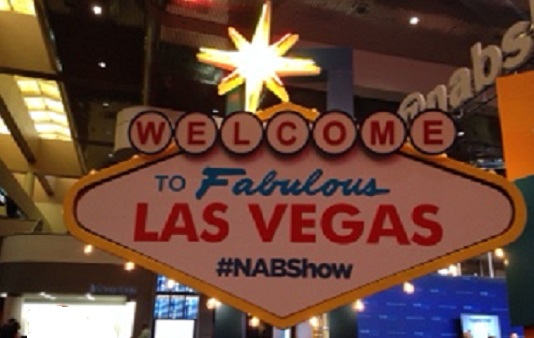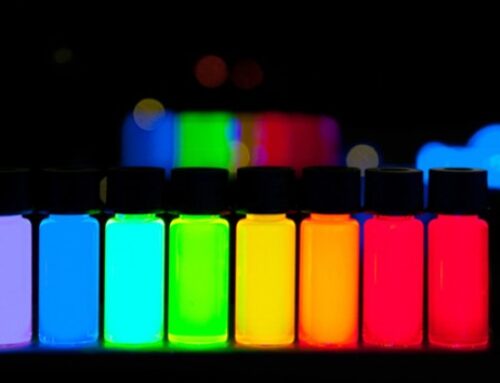By Kevin Miller
ISFTV went to the 2016 NAB Show and walked the Las Vegas Convention center floor for the first two days of the show in search mainly of new 4K resolution broadcast and client monitors for our Post Production clients in the New York area. While the slogan for this year’s show was ‘’Unleash!’’, generally speaking, we were somewhat disappointed in the number of new 4K monitors coming to market in the near term.
HDR and wide color gamut were both a major focus of the show as broadcasters, and other internet content providers gear up to deliver more UHD HDR programming.
Sony showcased its Trimaster EL™ PVMA250 OLED monitor with a re-engineered design for more flexibility and ease of use, but is 1080p Full HD and not 4K.
The company also exhibited its flagship product, the Trimaster EL™ BVM-X300, a 30-inch 4K HDR capable OLED monitor that carries a hefty list price tag of $30,000. This monitor had by far the best picture we saw at the show, and at that price you would expect that. Sony had the best HDR demonstrations with live camera feeds of a variety of scenes, and then monitors setup next to them reproducing the feed in HDR so you could compare the live picture with the HDR monitor’s rendition of the same scene. This presentation was really impressive, and showed how HDR really is a closer approximation of how the human eye sees.

Sony Trismaster EL™ BVM-X300 Monitor
Sony introduced a 4K 55-inch RGBW OLED client monitor, the 4K Trimaster EL™ OLED PVMX-550 (available Mid 2016) that is clearly an LG OLED panel, presumably with Sony’s software modifications to color, gamma, and other performance parameters, but at an astronomical price of $28,000. It would be far more economical to use one of the current LG EF9500 ($3,500 for the 55-inch and $5,000 for the 65-inch) or the Signature G-series LG 4K OLED ($6,000 to $8,000), and add a LUT box from AJA, Flanders, Black Magic, Fuji or Murideo to work out the performance issues of the LG panels.

Sony 4K Trimaster EL PVM-X550 Client Monitor
Other display manufacturers are also OEMing the LG 55-inch 4K OLED (my guess is the 55EF9500). Boland is selling their version of the LG 55-inch 4K OLED, the BVB55, as a broadcast monitor as well as Fusion, which is offering the same OLED panel Reference Display System, the ORD-55, as a reference broadcast monitor albeit with a much larger bezel on it. Fusion won New Bay Media’s Best of Show Award for this monitor.
TVLogic showed two new 4K LCD monitors the LUM-171G 17-inch, and LUM-240G 24-inch monitors. While not HDR capable, these two monitors do cover up to DCI’s P3 color gamut. The company also debuted two potential large screen 4K LCD client monitors: The LUM-420M, and LUM-550M are 42 and 55-inch 4K monitors with 12G and 6G SDI inputs.
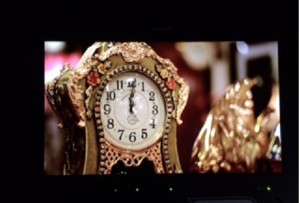
TVLogic LEM-250A OLED Reference Monitor
Eizo introduced two 4K monitors the CG248-4K 24-inch, and the CG318-4K 31-inch, both of which are certified by the new TÜV Rheinland’s Color Accuracy certification standard. I look forward to calibrating these monitors in the field to see if this new certification program carries any weight. The company also showed two new 1080p Full HD monitors with a software package for calibration using a direct connection with meters like the Klein K-10A at the USB port that will undoubtedly increase the efficiency of the calibration process. I look forward to testing this out later in the year to see how well it works.
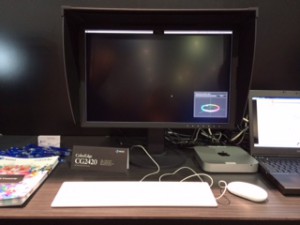
Eizo’s CG2420 LCD Monitor with Calibration Software for Direct Connection to Colorimeters via a USB Port
Flanders Scientific, a company providing high performance professional broadcast monitors and post production equipment will have new 4K HDR capable monitors available later in the 4th quarter of the year, and had a prototype on the show floor to demonstrate.

Flanders Scientific Monitor
Christie Digital had one of the few really big screen front projection demonstrations of HDR using a new prototype (proof of concept) RGB laser projector. Unfortunately, all of the clips were mastered in 2K (1920 x 1080) so the resolution benefit of UHD was not there. However, the last clip from “Mad Max: Fury Road“ had great detail thanks to the HDR aspect of the picture, and the color was clearly DCI’s P3 wider color gamut. It should be noted that, as of this writing, RGB laser is the only display technology currently capable of reproducing full Rec 2020 color space, which is considerably higher than P3. The light output was quoted as 56 fL. or 192 Nits which is extremely bright for front projection.
As far as LUT boxes are concerned, both Murideo and Flanders introduced new LUT box solutions. Murideo showed its Prisma LUT box, which has two different video processing options. The first combines the PrismaVue with a 3D LUT. The alternate configuration replaces the PrismaVue with 1D-RGB LUTs before and after the 3D LUT. The reason for this added feature is to provide better 3D LUTs and a more accurate final result that is suitable for color grading. Placing a 1D LUT in front of the 3D Cube LUT allows for opening up all 17-calibration points by shifting the low and high points into SMPTE range (64-940 in 10-bit system), thus adding calibration points that would normally be lost to clipping and below black. The 1D LUT after the 3D Cube LUT is then used to reverse/complement the 1D Pre-LUT prior to outputting to the monitor. The Post 1D-LUT can also be used for fine-tuning the gamma/grayscale performance.
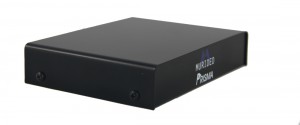
Murideo Prisma LUT Box
Flanders BoxIO is an advanced color management device designed for color critical post production environments. It supports both 1D and 3D LUTs, has Dual Channel mode meaning it can accommodate two LUTs, and has 12-bit support across all of its inputs and outputs. The BoxIO won a NewBay Media NAB 2016 Best of Show Award from Digital Video Magazine.
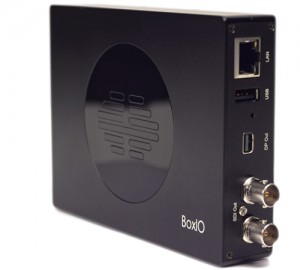
Flanders Scientific BoxIO LUT Box
Finally, I was truly and pleasantly surprised to see a demo of a Hisense curved LED full array backlit LCD panel with new Quantum Dot technology from 3M that 3M claims achieves roughly 90% of Rec 2020 color space.
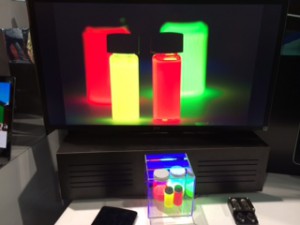
Quantum Dots from 3M
This is exciting as it means that flat panel displays will soon be capable of coming very close to reproducing Rec 2020 color, which only extremely expensive RGB laser projectors have been able to achieve to date.
While I was somewhat disappointed at the number of 4K monitor solutions for both grading and client monitors introduced at this year’s NAB show, there were at least a few interesting displays from Sony, Eizo, and TVLogic with 4K resolution.
Regarding HDR, given the extremely problematic rollout of HDR (High Dynamic Range) video on the consumer side, I was not surprised that there were very few HDR capable monitors on the show floor. Sony certainly had the most impressive HDR demonstrations on their high end 4K HDR OLED monitor the Trimaster EL BVM-300.
As of this writing, doing HDR correctly is extremely difficult, largely because the industry lacks the proper calibration tools and software to measure, analyze, and calibrate HDR displays. HDR test material for the evaluation and calibration of HDR displays will be soon brought to market, and CalMAN and Light Illusions will soon be providing HDR workflows and reports for their software that can be used with this test material for calibration purposes. Creating the right workflow for HDR Post Production work is also a big challenge for our industry. It is clear that 2016 will be the year where these issues get resolved so that we can move forward with assessing HDR performance, and being able to optimize displays in the Post Production phase for HDR.

